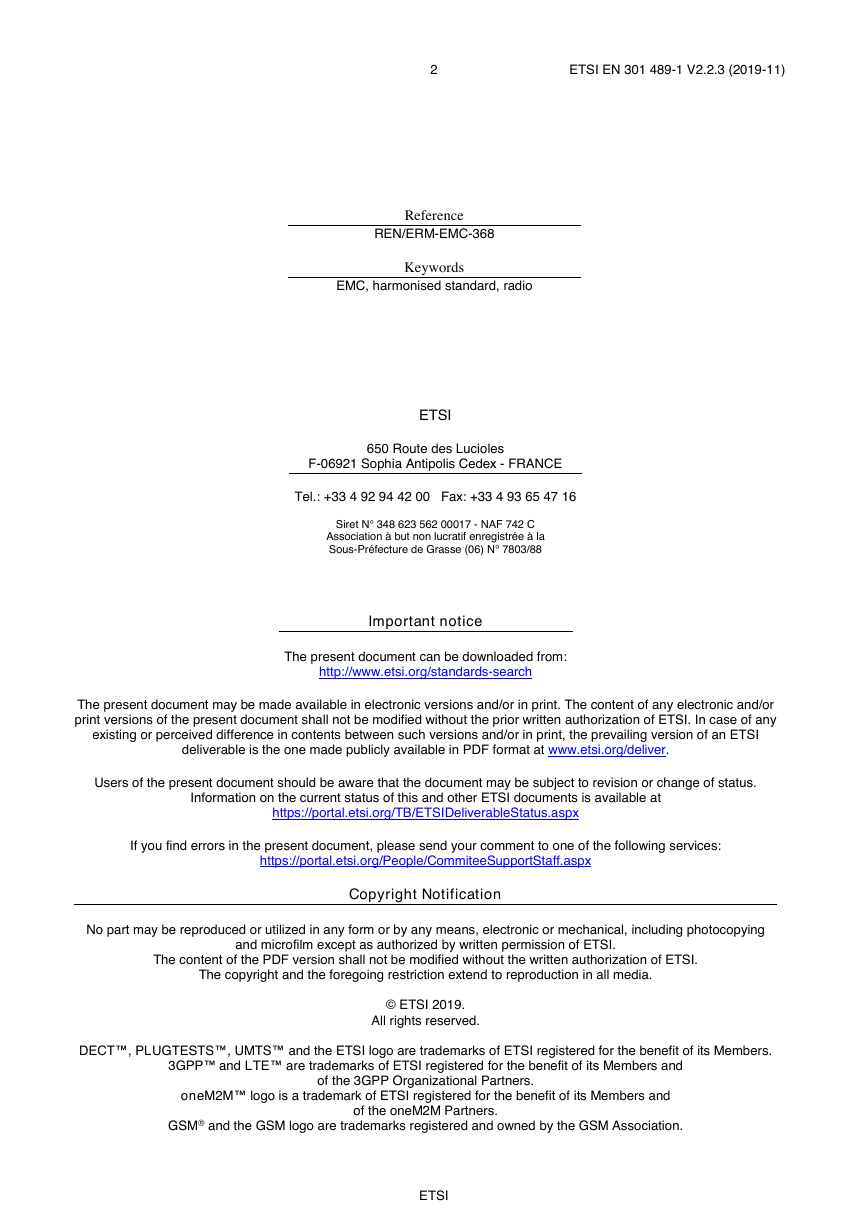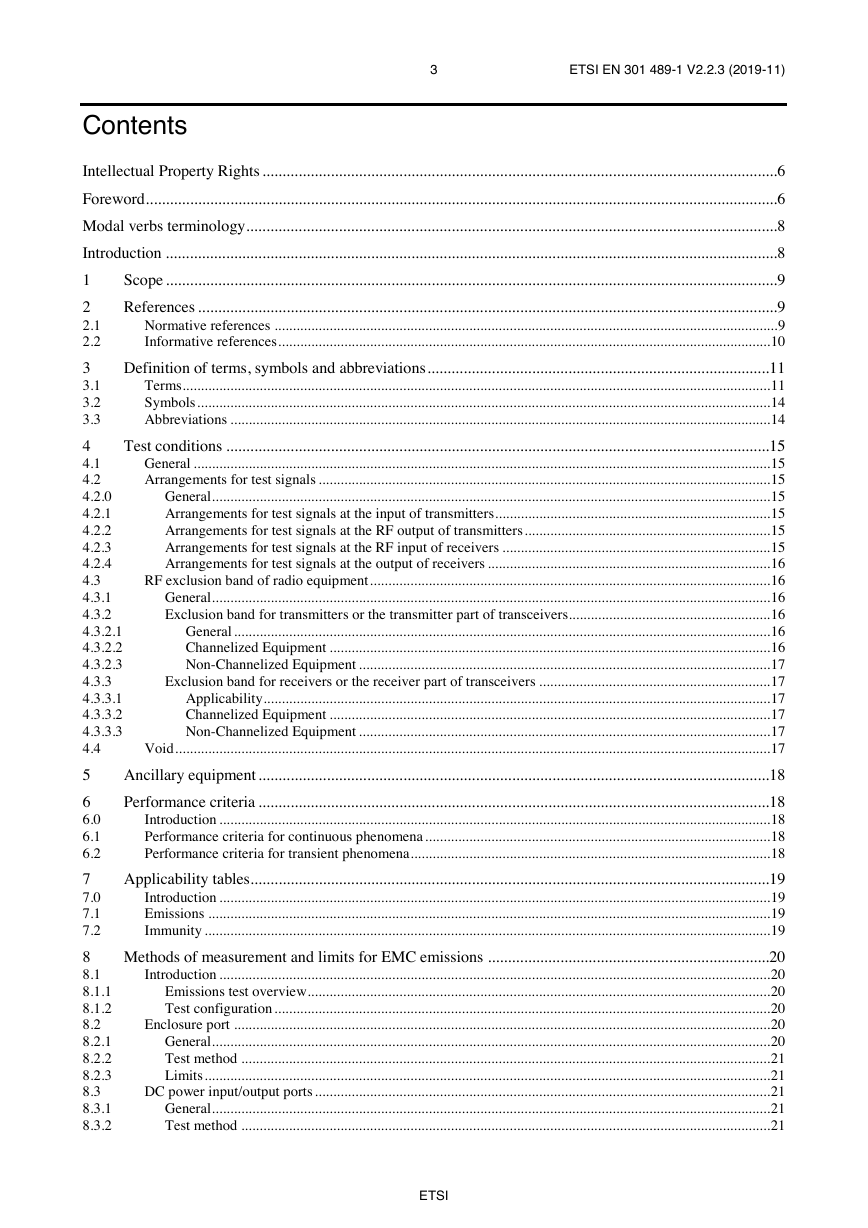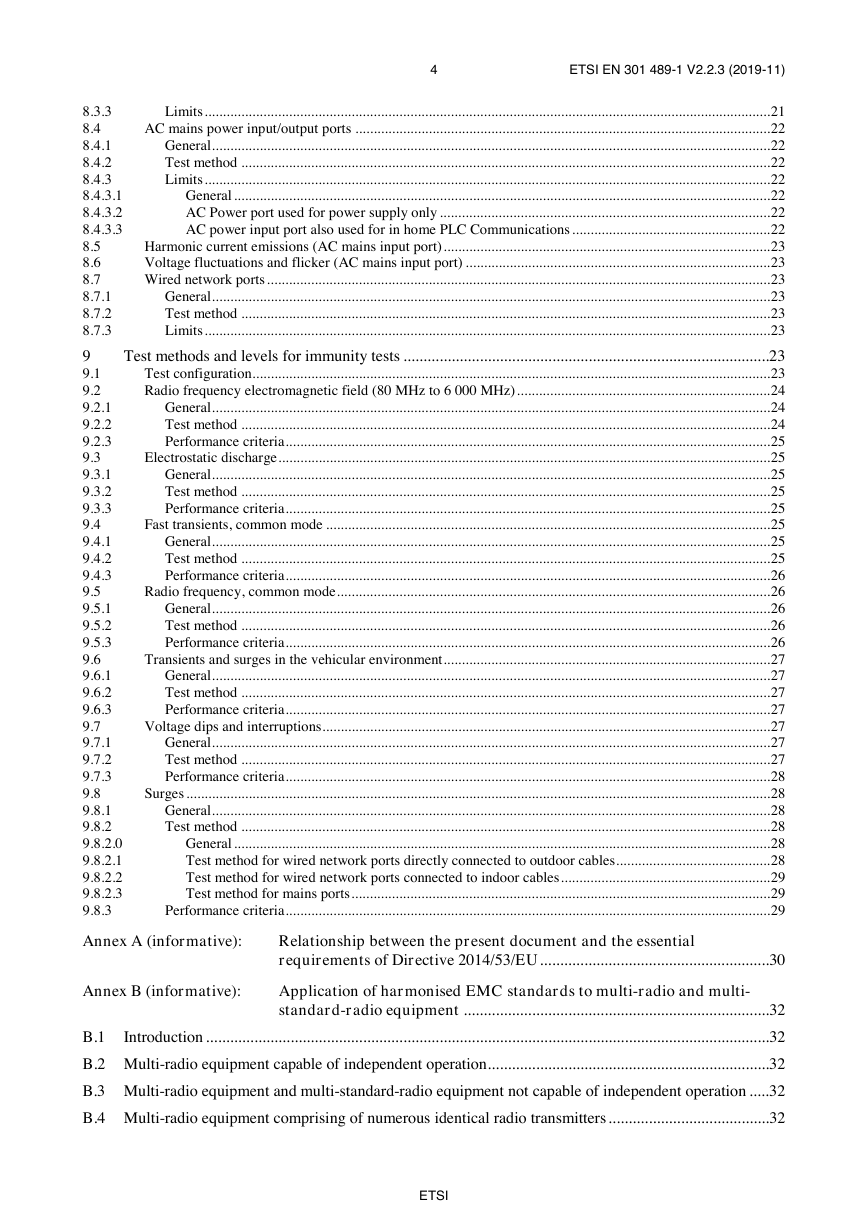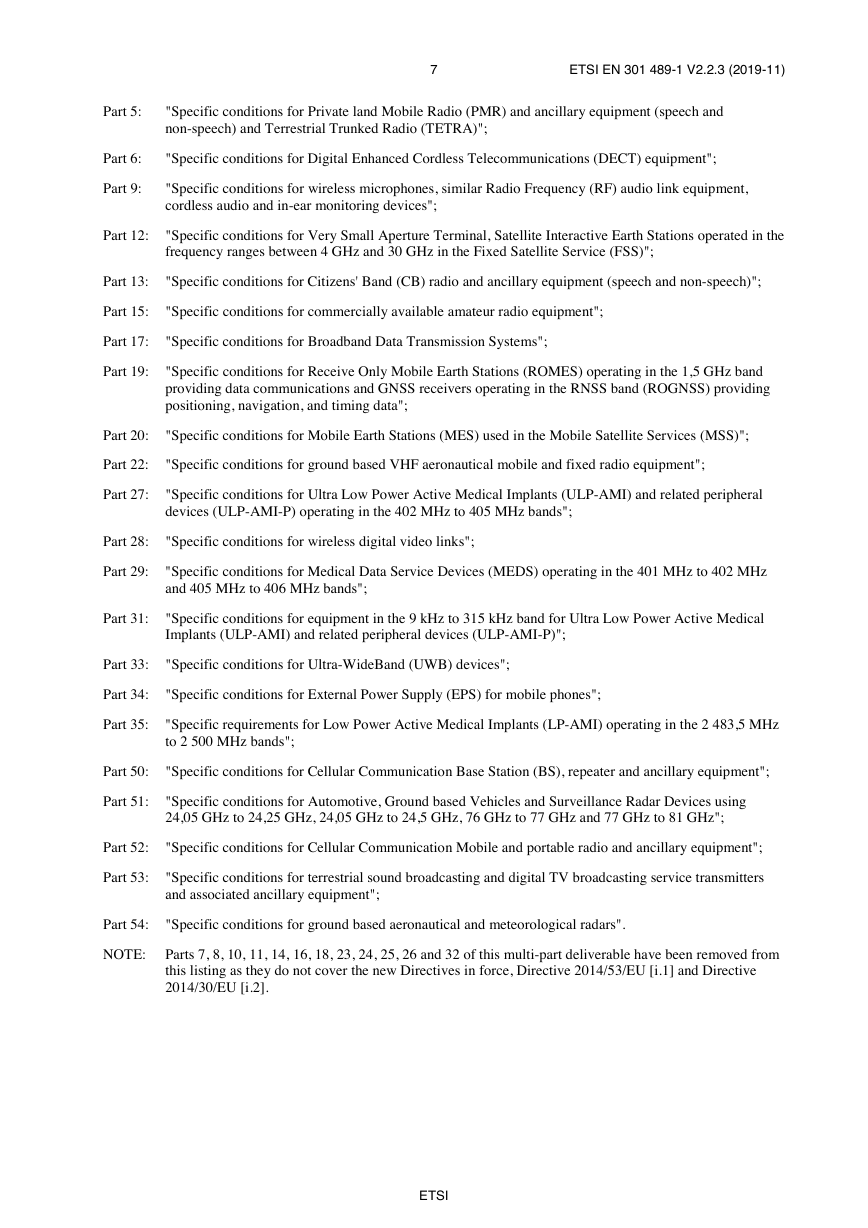Intellectual Property Rights
Foreword
Modal verbs terminology
Introduction
1 Scope
2 References
2.1 Normative references
2.2 Informative references
3 Definition of terms, symbols and abbreviations
3.1 Terms
3.2 Symbols
3.3 Abbreviations
4 Test conditions
4.1 General
4.2 Arrangements for test signals
4.2.0 General
4.2.1 Arrangements for test signals at the input of transmitters
4.2.2 Arrangements for test signals at the RF output of transmitters
4.2.3 Arrangements for test signals at the RF input of receivers
4.2.4 Arrangements for test signals at the output of receivers
4.3 RF exclusion band of radio equipment
4.3.1 General
4.3.2 Exclusion band for transmitters or the transmitter part of transceivers
4.3.2.1 General
4.3.2.2 Channelized Equipment
4.3.2.3 Non-Channelized Equipment
4.3.3 Exclusion band for receivers or the receiver part of transceivers
4.3.3.1 Applicability
4.3.3.2 Channelized Equipment
4.3.3.3 Non-Channelized Equipment
4.4 Void
5 Ancillary equipment
6 Performance criteria
6.0 Introduction
6.1 Performance criteria for continuous phenomena
6.2 Performance criteria for transient phenomena
7 Applicability tables
7.0 Introduction
7.1 Emissions
7.2 Immunity
8 Methods of measurement and limits for EMC emissions
8.1 Introduction
8.1.1 Emissions test overview
8.1.2 Test configuration
8.2 Enclosure port
8.2.1 General
8.2.2 Test method
8.2.3 Limits
8.3 DC power input/output ports
8.3.1 General
8.3.2 Test method
8.3.3 Limits
8.4 AC mains power input/output ports
8.4.1 General
8.4.2 Test method
8.4.3 Limits
8.4.3.1 General
8.4.3.2 AC Power port used for power supply only
8.4.3.3 AC power input port also used for in home PLC Communications
8.5 Harmonic current emissions (AC mains input port)
8.6 Voltage fluctuations and flicker (AC mains input port)
8.7 Wired network ports
8.7.1 General
8.7.2 Test method
8.7.3 Limits
9 Test methods and levels for immunity tests
9.1 Test configuration
9.2 Radio frequency electromagnetic field (80 MHz to 6 000 MHz)
9.2.1 General
9.2.2 Test method
9.2.3 Performance criteria
9.3 Electrostatic discharge
9.3.1 General
9.3.2 Test method
9.3.3 Performance criteria
9.4 Fast transients, common mode
9.4.1 General
9.4.2 Test method
9.4.3 Performance criteria
9.5 Radio frequency, common mode
9.5.1 General
9.5.2 Test method
9.5.3 Performance criteria
9.6 Transients and surges in the vehicular environment
9.6.1 General
9.6.2 Test method
9.6.3 Performance criteria
9.7 Voltage dips and interruptions
9.7.1 General
9.7.2 Test method
9.7.3 Performance criteria
9.8 Surges
9.8.1 General
9.8.2 Test method
9.8.2.0 General
9.8.2.1 Test method for wired network ports directly connected to outdoor cables
9.8.2.2 Test method for wired network ports connected to indoor cables
9.8.2.3 Test method for mains ports
9.8.3 Performance criteria
Annex A (informative): Relationship between the present document and the essential requirements of Directive 2014/53/EU
Annex B (informative): Application of harmonised EMC standards to multi-radio and multi-standard-radio equipment
B.1 Introduction
B.2 Multi-radio equipment capable of independent operation
B.3 Multi-radio equipment and multi-standard-radio equipment not capable of independent operation
B.4 Multi-radio equipment comprising of numerous identical radio transmitters
Annex C (informative): Information required by the test laboratory
C.1 Information to be supplied
Annex D (informative): Bibliography
Annex E (informative): Change history
History
















 2023年江西萍乡中考道德与法治真题及答案.doc
2023年江西萍乡中考道德与法治真题及答案.doc 2012年重庆南川中考生物真题及答案.doc
2012年重庆南川中考生物真题及答案.doc 2013年江西师范大学地理学综合及文艺理论基础考研真题.doc
2013年江西师范大学地理学综合及文艺理论基础考研真题.doc 2020年四川甘孜小升初语文真题及答案I卷.doc
2020年四川甘孜小升初语文真题及答案I卷.doc 2020年注册岩土工程师专业基础考试真题及答案.doc
2020年注册岩土工程师专业基础考试真题及答案.doc 2023-2024学年福建省厦门市九年级上学期数学月考试题及答案.doc
2023-2024学年福建省厦门市九年级上学期数学月考试题及答案.doc 2021-2022学年辽宁省沈阳市大东区九年级上学期语文期末试题及答案.doc
2021-2022学年辽宁省沈阳市大东区九年级上学期语文期末试题及答案.doc 2022-2023学年北京东城区初三第一学期物理期末试卷及答案.doc
2022-2023学年北京东城区初三第一学期物理期末试卷及答案.doc 2018上半年江西教师资格初中地理学科知识与教学能力真题及答案.doc
2018上半年江西教师资格初中地理学科知识与教学能力真题及答案.doc 2012年河北国家公务员申论考试真题及答案-省级.doc
2012年河北国家公务员申论考试真题及答案-省级.doc 2020-2021学年江苏省扬州市江都区邵樊片九年级上学期数学第一次质量检测试题及答案.doc
2020-2021学年江苏省扬州市江都区邵樊片九年级上学期数学第一次质量检测试题及答案.doc 2022下半年黑龙江教师资格证中学综合素质真题及答案.doc
2022下半年黑龙江教师资格证中学综合素质真题及答案.doc